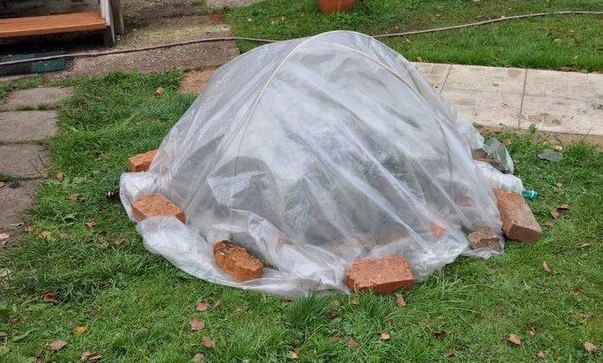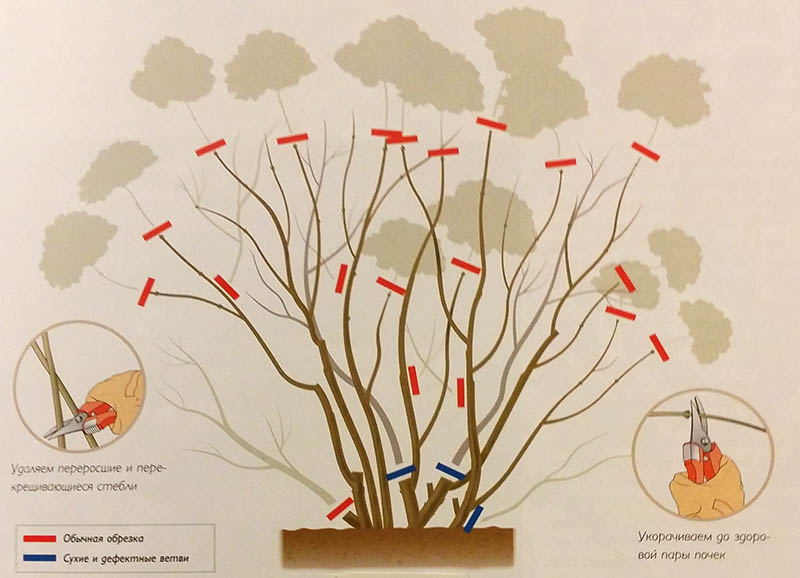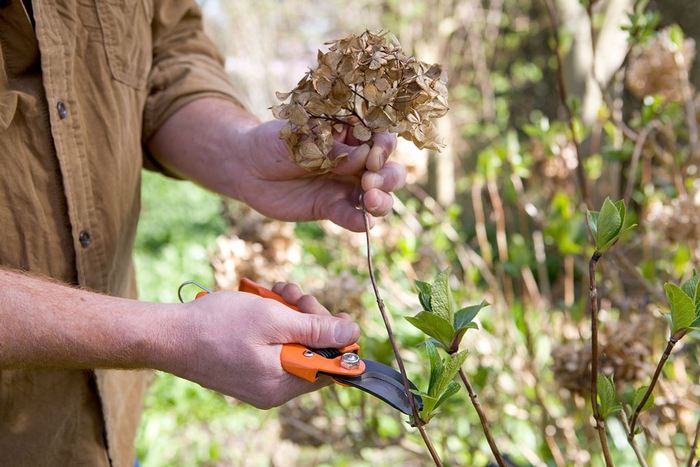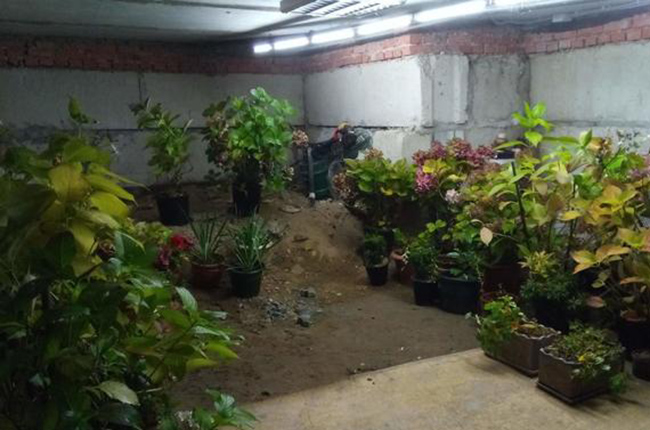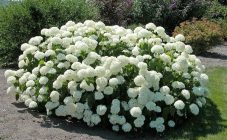Content:
Hydrangea is a very beautiful plant with dense and rather large inflorescences. This shrub plays an important role in landscaping and needs to be cared for properly. In particular, the gardener should know how to prepare the hydrangea for winter, when to prune it, and how to cover it. Timely measures taken will ensure the normal development of the shrub and its abundant flowering.
Why is it necessary to cover the hydrangea for the winter?
Hydrangeas are shrubs or small trees that grow in the wild mainly in Southeast Asia, Japan and China, and are also found in Latin America. It was from the Land of the Rising Sun that she was brought to Europe. It is interesting that the first varieties of it were quite winter hardy. But since then, about a hundred garden varieties have been created. Most of the newly developed varieties are thermophilic. Therefore, it is recommended to cover such plants for the winter, adhering to one of the methods described below.
Preparing hydrangeas for winter includes the obligatory removal of faded inflorescences and pruning of shoots that have not yet become lignified, since the latter, most likely, will not survive the winter (especially when it comes to harsh climatic conditions, for example, in the Urals). It is believed that it is not necessary to cut the inflorescences, since this is more likely to preserve the buds located under them. But in fact, in regions with snowy winters, the left inflorescences increase the risk that shoots and branches will break under the weight of the sediment accumulating on them. That is why they need to be removed - this is the only way to save the shrub as a whole.
As already mentioned, not all hydrangeas from those that are suitable for growing in the conditions of the Moscow region and the middle lane need shelter. Experts recommend covering only the large-leaved hydrangea and the Sargent hydrangea. It is believed that the tree hydrangea does not need this. But in fact, it all depends on age - young trees are not quite winter-hardy. In the first two years after planting, in order to preserve the plant, it will have to be additionally protected for the winter. And if we are talking about more severe climatic conditions, for example, in Siberia, then protection may be needed there even after this period.
How to cover a hydrangea for the winter?
How to cover young shoots is another important question, because the goal is precisely their preservation. Fortunately, it doesn't require much effort. Even for a young hydrangea, wintering in the open field is not a problem, the main thing is to compensate for sudden temperature changes, as well as to prevent the possible absence of snow (and in the Moscow region this happens regularly, to say nothing of the more southern ones).
So, such plants need hilling so that the soil around the bushes is dry. It is also recommended to mulch the plant trunk circle. For this, dry leaves are used, the main thing is that their layer is thick enough.
Knowing how the garden hydrangea winters, one should not be surprised that hilling and warming with spruce branches is enough for a tree species, and then only in the most frosty regions. This hydrangea has quite large bushes, so you do not need to bend them down, but it is recommended to tie them up to pegs driven into the ground in advance. then their lower parts are insulated with spruce branches.
But Sargent's hydrangea is recommended to be prepared differently for winter. You need to spud the base of the bush, mulch the soil using dry foliage, and then place a box of thick cardboard over the bush or wrap the crown of the plant with either paper or non-woven materials used in agriculture.
Taking care of large-leaved hydrangeas in the fall and preparing for winter also includes shelter. Such bushes are bent to the ground, laid on prepared shields so that the shoots do not come into contact with the soil. It is recommended to fix the branches with twine. From above, the bush is covered with sawdust and dry leaves and covered with plastic wrap, in which holes are made for ventilation. But in severe frosts it is recommended to close them. If there is no snow in winter, additionally you need to lay spruce branches on top.
Do I need to prune the plant for the winter?
Many people think that pruning hydrangeas is needed only in early spring, but in fact this is not entirely true. In the fall, it is imperative to carry out something like a sanitary cleaning, removing dry and damaged branches. Sections are treated with a special protective compound.
In autumn, pruning is recommended for tree and panicle hydrangeas. After such a procedure, they will have many new shoots and flowers. Autumn pruning is even more preferable for them, since at this time juice does not ferment in the shoots. Experts are divided on the large-leaved hydrangea. As already mentioned, in snowy regions, for example, in the Leningrad region, in the Urals, in Siberia, this should be done. In the south of Russia, where there are no such snowstorms and drifts, it is not necessary to do this, since young shoots winter well and so.
Hydrangea care in the fall necessarily includes collecting all dry leaves. They must be destroyed immediately. It does not matter whether we are talking about the Moscow region or another climatic zone, the same procedure is provided for the large-leaved hydrangea - all the leaves are removed from the lower half of its bushes. Thus, lignification of shoots occurs faster, and this increases frost resistance and helps to keep the plant intact even in frost.
Wintering a large-leaved hydrangea is a very important issue. To avoid problems, trimming it should be cosmetic. You should also observe the following rules:
- you can trim the hydrangea tree-like only if the following condition is met - it is a healthy tree that is already four years old, otherwise it may simply disappear;
- panicle hydrangeas are pruned in moderation, skeletal branches should be kept intact, only those shoots that grow inward, as well as weak thin branches, can be removed;
- for old shrubs, regardless of the variety, it is recommended to perform rejuvenation in the fall, cutting off the branches almost completely, leaving no more than 10 cm from each shoot.But all branches cannot be cut at a time, otherwise the plant will not stand, and rejuvenation is carried out in stages for 3- 4 years.
Storing plants in the basement
Of course, hydrangeas are not house flowers. Small bushes that have not yet matured on the street in winter may simply not stand it. Therefore, many experts advise keeping this plant in the basement in winter. To care for them, you need to dig them up in the fall and transplant them into pots of suitable size. After that, the plant can be sent to the basement. True, not every room is suitable for this.
If this is a cottage with an uninsulated basement, in which no one lives in the winter, then there is a risk that the hydrangea will disappear. If this is a house in which they constantly live, then even if there is no heating in the basement, the plants will not disappear. But for this, the premises must be prepared in advance. In particular, you need to take care of indoor lighting. For these purposes, fluorescent lamps are used (their number depends on the area of the room).
In the spring, these plantings are taken out into the street. It is clear that it is impossible to plant them in frozen ground, you need to wait for suitable conditions. It is recommended to keep very small trees in pots even in the new season, especially since in the fall they will again have to be removed to the basement. As a rule, they recover rather quickly in the presence of a sufficient amount of sunlight, and in the summer they delight the owners with their flowering.
Having studied the tips for caring for hydrangea, it will not be difficult to create suitable conditions for the growth of this flower, which pleases the eye with its flowering.

